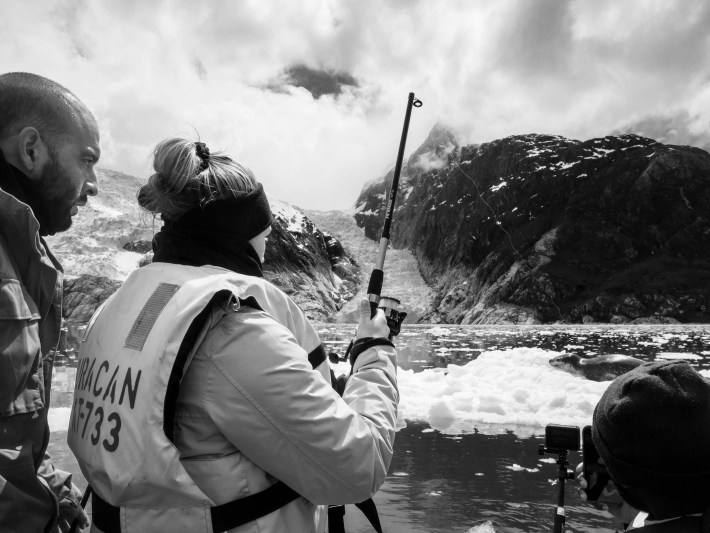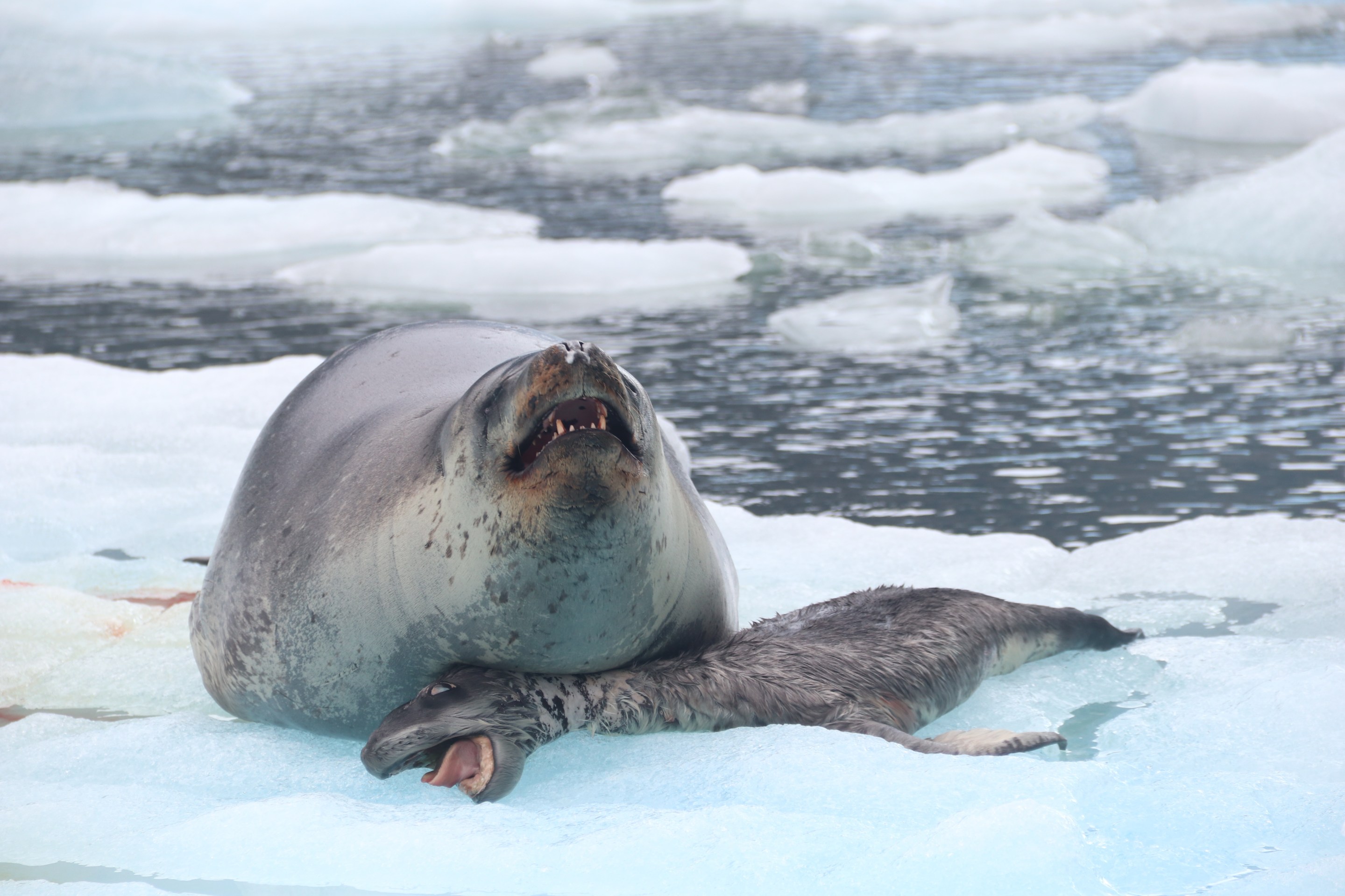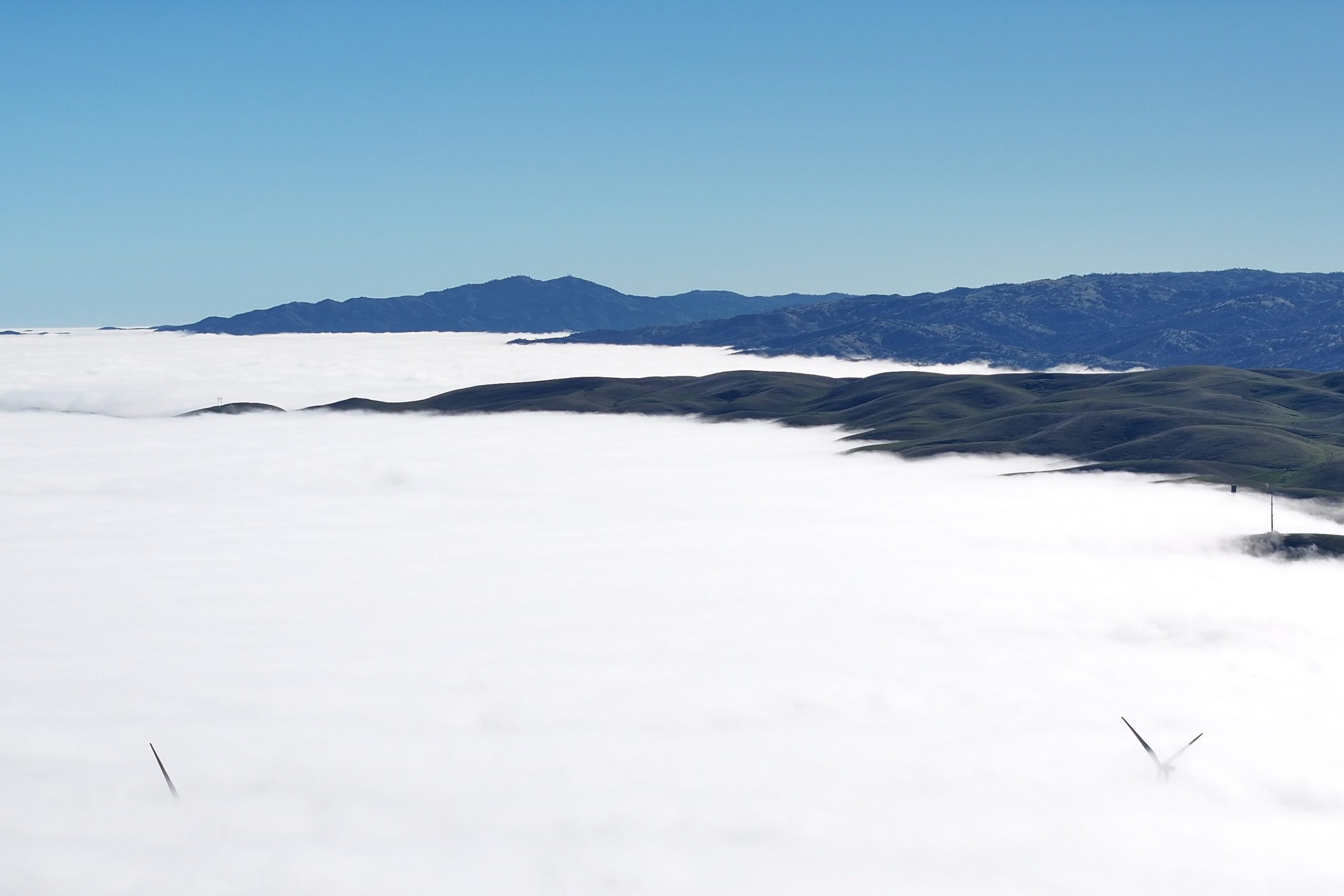In the fall of 2021, Renato Borras-Chavez, a marine mammal ecologist at the University of Rhode Island, spotted a leopard seal on an ice floe. Borras-Chavez was on a research expedition to a glacial fjord in Chile's Tierra del Fuego at the southern tip of South America, one of the places leopard seals take up residence outside of Antarctica. He was thrilled; this was the first leopard seal he'd ever seen in Chile, where he is from. As he peered through his binoculars, he noticed another, smaller seal: a pup. "I got so excited, and then we got there, and it's dead," he said.
As the boat drew nearer, he could see the pup was still haloed in downy white hairs, suggesting it was less than a week old. Its head was submerged and its limp body was frozen to the ice. The mother seal kept touching the pup with her nose, baring her mouth at the boat. As the boat approached, the mother grabbed her pup and jumped into the water.
The behavior was strange, but Borras-Chavez did not linger on it. In 2023, Borras-Chavez and Emily Sperou, a marine mammal ecophysiologist at the same university, set out on another expedition in Chile, this time to another leopard seal hangout at Laguna San Rafael National Park in Patagonia, where chunks of calving glaciers bob around blue waters. A Chilean ranger had given him a heads up that a seal in the lagoon, who was known as LSR01, or Nora, had given birth to a pup a couple weeks earlier on Oct. 18—a lively, yellow baby.
Borras-Chavez had no hope of seeing the newborn. No leopard seal pups born in Chile survive past infancy, for reasons scientists are still puzzling out. So he expected Nora's pup would have died and disappeared long before his arrival. But on Nov. 1, a tour guide spied Nora—identifiable by her spots—and a pup. It would have been impossible for Nora to have had another pup, so Borras-Chavez knew it was the pup born two weeks ago. He also knew the lagoon's ice floes were fragile, breaking apart in a matter of days, meaning Nora must have been carrying her pup around from floe to floe for quite some time. The researchers realized "this is no longer just a one-off experience," Sperou said. On Nov. 2, a tour operator confirmed the pup was dead. As Nora lay on top of its unmoving body, she turned to watch the boat and then rested her head back on her pup.
They dropped their prior expedition plans in order to cruise around the lagoon to document Nora and her pup. "You can drive around the lagoon the entire day, and sometimes you don't see anything," Borras-Chavez said. "It's not like they're not there, it's just so much ice and shadows." When the researchers arrived at the lagoon on Nov. 13, they found Nora. They watched her nudge the pup with her head several times. As the boat passed, she grabbed its body with her mouth and dove into the water. The day after, they returned to see Nora nuzzle her pup and call out at the boat, again diving into the water with its body in her mouth. In total, Nora watched over her dead pup for 20 days.

Later on, a ranger said he'd seen a pup on its own on an ice floe on a rainy, low-visibility day. "He was a new guy," Borras-Chavez said. "So we were like, 'Oh yeah, sure.' It's probably a rock." But the new guy was right; Nora's pup was alone on the floe. The researchers waited for a long time to see if the mother would return. When she did not, they retrieved the pup and necropsied its body.
Borras-Chavez, Sperou, and colleagues recently published the results of the necropsy in Polar Biology, along with their detailed observations of mother seals attending to their dead pups. Nora's 20-day vigil is the longest documented example of postmortem attentive behavior in pinnipeds—seals, sea lions, and walruses—and among the longest in any mammal.
"Leopard seal are truly an enigma," Dan Costa, an ecologist at the University of California, Santa Cruz, who was not involved with the research, wrote in an email. He added that he found the paper's documentation of the seals' little-known reproductive behavior important, as scientists know much more about the mother-pup connections in other species, such as Weddell seals and sea lions. "I have seen fur seal mothers try to interact with their stillborn pup, but nothing like what they report for leopard seals," Costa said.
The paper documents this behavior in two leopard seals. The first, TF13, who the researchers called Macarena, was the seal sighted in 2021 in Tierra del Fuego. Every other instance in the paper focuses on Nora, the seal living in Laguna San Rafael who attended to her dead pups in 2021, 2023, and 2024. Nora is the heart of the paper, and the scientists are still puzzling out how much of this behavior is specific to Nora or more universal parental instinct among leopard seals. "It's fascinating to us that this is one of the least studied apex predators on Earth, this giant seal," Sperou said. "And we just know basically nothing about them."
Leopard seals are the third largest seal in the world, with females, which are larger than the males, reaching more than a titanic 1,100 pounds. They are solitary, extremely powerful, and dwell mostly in and around Antarctica, where they haul out on ice, making them difficult to study. "We cannot safely get onto the iceberg with the leopard seal," Sperou said. So researchers must study them at a distance from boats and collect the samples they need, of blubber, skin, or hair, with a dart gun.

To track Nora and her pup in 2023 and 2024, the researchers had to haul their gear from their hut and walk roughly two-and-a-half miles to get to their boat. (The expeditions were primarily funded by the National Science Foundation, which has suffered more than $1 billion in research cuts under Donald Trump.) Once in the lagoon, they jetted around in search of the duo. Tour boats have made the leopard seals of Laguna San Rafael accustomed to people, so the researchers were able to drift relatively close to observe the animals. On a calm day, the lagoon has an eerie silence, broken only by the cracking of ice, which Borras-Chavez refers to as "frappé ice" because it sounds like the clinking of a glass of iced coffee.
As Borras-Chavez and Sperou watched Nora guard her lifeless pup, they felt mixed emotions. "It's being a scientist and a researcher and realizing that this is such a fascinating thing going on, and our curiosity just sparks," Sperou said. "And then there's the flip side of it, where it's like we are humans, and we are seeing a mother carrying around her dead baby." Or, as Borras-Chavez put it, "you weep a little bit." The researchers abstained from flying drones or sampling the seals when they were with pups, dead or alive. "Our model is usually science-first," Borras-Chavez said. "But if an action that we're taking would have been disrespectful for us, if somebody else would do it, then we don't do it."
When Nora eventually abandoned her pup in 2023, the researchers retrieved it for a necropsy. The pup was female, and her teeth had just begun to poke out from her gums. Her stomach was empty, suggesting she had not been suckling and likely died of emaciation. Many of her bones had been crushed but only after her death, likely when her mother lay on top of her small body. The researchers called the pup Rafaella, after the lagoon.
It's not clear why no leopard pups seem to survive in Chile. An unpublished genetic analysis on Rafaella ruled out inbreeding as a cause of death. More generally, the researchers suspect the conditions of the lagoon, while peaceful and predator-free for adult seals, are less than ideal nurseries, given that the lagoon's ice floes break apart in a matter of days. One of the researchers' hypotheses is "that they're having their pups on these small icebergs, and the icebergs are breaking or melting, and the pups fall into the water and will instantly drown and freeze," Sperou said. Besides, the lagoon itself is no forever home for the seals, as the glacier will continue to recede until it vanishes entirely.
Scientists still do not know where leopard seals have their pups. Only 160 leopard seal pups have ever been documented, and it's expensive to send researchers out to try to track down nurseries. The fact that there are leopard seals means "they have to be having pups somewhere, and those pups have to be surviving," said Sperou, who is currently in Antarctica hoping to find more clues.
On Oct. 14, 2024, the researchers returned to the lagoon. Nora had just given birth to another another newborn pup. A tour operator watched as the two seals touched each other, Nora nudging her pup with her nose, Three days later, the researchers went to the lagoon and saw that the pup had died. Nora remained fixated on its body, touching her face to its face and calling out to it. As their boat drew nearer, Nora opened her mouth and snarled at its presence. Two days later, the researchers saw Nora alone, without the pup.
The obvious question underlying this research—why a leopard seal would spend days lugging around the 150-pound body of a pup that has died—is impossible to answer, at least for now. Sperou suspects the response is largely physiological. Whenever a mammalian mother—human, seal, or otherwise—has a baby, their body flushes with serotonin, dopamine, and oxytocin. These hormones help bond the mother to her baby. "It's out of her control," Sperou said. "It's her hormones and her body telling her to stay with her pup."
Scientists are often resistant to call behavior like this "grief" to avoid accusations of anthropomorphism, the act of interpreting animal behavior through human terms. Borras-Chavez offered "after-death caregiving" as a friendlier alternative than "post-mortem attentive behavior." As Sperou makes clear, "Do we know if she's actually grieving? No, we don't." But, she added, "I think it's understandable to say this could be some type of grieving behavior"—emphasis on the could.
Nora's pattern of watching over her dead pups recalls the killer whale Tahlequah, who made headlines in 2018 for her "tour of grief," in which she carried the dead body of her calf for 17 days. In 2024, when her calf died, she did it again, coincidentally during the same week the researchers sent the new paper in for publication. "We know from rigorous scientific observation that grief and love aren’t exclusively human," Barbara J. King, a professor emerita of anthropology at William & Mary and research fellow at the animal-ethics think tank PAN Works, wrote in an email. "They don’t belong to us; they are not human terms."
King, however, is careful to note that not every instance of post-mortem attentive behavior involves grief. Sometimes animals guard their dead as a matter of territorial protection; others tend to a corpse as curiosity. But in certain cases, King believes, behavior such as grooming a body, carrying it around, and vocalizing distress can suggest something more. "When we see that quality of sorrowful care emergent from profound relationality during life, we shouldn’t be reluctant to introduce and discuss an emotion-based term," she said.
When King read the report of how Nora acted around her dead pup in 2023, she fixated on the details of the paper—how the mother maintained "intense focus" on the carcass and "often rested her head on top of" the body. Questions swirled in her mind. "How likely is it that a pinniped mother—an intelligent mammal—would carry out all these behaviors in a complete absence of any emotion?" she asked herself. "It’s possible, of course."
But, she added, to assume the absence of emotion would enact anthropodenialism, a term coined by the primatologist Frans de Waal, referring to the a priori rejection of human-like traits in animals or animal-like traits in us. "Are the risks greater of claiming grief is expressed by this mother, or of denying her these emotions completely?" King said. "I value recognition of the expression of profound feelings in animals without insisting on impossible standards of confirmation of that interpretation, standards we would never apply to our own species," she added.
Whatever the reason, it is clear that this behavior comes at great cost to the mother. "The energy they need to carry around a dead pup, swimming through the water with it, all that drag, jumping up onto an iceberg with it," Sperou said. A mother who refuses to abandon her pup will likely go without feeding herself. It is a meaningful sacrifice to sit with a pup for 20 days, dead or alive.
In general, seals are known to give the least amount of maternal care in the mammalian kingdom, with many species feeding their pups for a few weeks to a few months and then setting them loose. But these observations suggest that leopard seals may give a great deal more of maternal care and show more attachment to their pups than previously hypothesized, Sperou said. The way she sees it, this pattern of behavior signals that leopard seals should rank higher in the category of complex mammals, such as chimps, whales, and elephants.
The researchers did not return to Laguna San Rafael this year. Borras-Chavez emailed all of the leopard seal tour guides a flyer with a photo of Nora and one of her pups, asking the guides to be extremely careful during pupping season. So far, no one has seen Nora, with or without a pup. But she may be out there in the lagoon, feasting on the abundant fish, relaxing without the presence of killer whales, and lounging on ice floes that will eventually become smaller and fewer, until no leopard seals are found in the lagoon at all.







